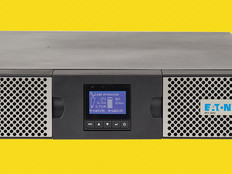Signed, Sealed, Delivered
With the buzz surrounding RSS feeds, Twitter, text messages and other Web 2.0 communication and collaboration tools, it may seem that e-mail — which celebrates its 38th birthday this year — has met its technological match.
Beyond the hype, however, the number of messages that each of us sends and receives on a daily basis continues to increase. Many agencies consider e-mail to be part of the official record and require that it be stored, so despite the wishes of many, e-mail won’t be going away anytime soon. With challenges such as spam, phishing and viruses also on the rise, it’s time to teach your old e-mail dog some new tricks.
An incredibly useful and ubiquitous tool, e-mail presents unique challenges for the server, the client and everywhere in between, so effective management requires a multilayered approach.
Here are six quick ways to make sure e-mail remains useful for another 38 years.
In the Server Room
1. Use a hardware-based unified threat management (UTM) device.
With all the threats coming into your agency’s network via e-mail these days, you simply cannot run a messaging environment effectively without a reliable UTM. Products from WatchGuard and SonicWall take care of problems such as spam and viruses in attachments before they even hit your e-mail servers. Good UTMs are highly configurable and offer simple and frequent software upgrades, so they’re the cheapest and easiest way to set up a solid first line of defense.
2. Set reasonable mailbox size limits. Particularly in government agencies, many e-mail users tend to keep every message they’ve ever sent or received — a nightmare for e-mail server administrators. Depending on the needs of your organization and its users, what constitutes a reasonable size limit will vary; 50 to 100 megabytes is typical. Disk space may be cheap, but mail server performance will suffer if mailbox sizes become unwieldy.
Particularly in government agencies, many e-mail users tend to keep every message they’ve ever sent or received — a nightmare for e-mail server administrators. Depending on the needs of your organization and its users, what constitutes a reasonable size limit will vary; 50 to 100 megabytes is typical. Disk space may be cheap, but mail server performance will suffer if mailbox sizes become unwieldy.
3. Invest in an e-mail vault solution.
In addition to addressing any need for permanent, long-term e-mail storage, e-mail vault technology can keep users happy by virtually removing storage quotas while keeping e-mail servers running at peak performance. Products such as Symantec Enterprise Vault allow for long-term storage of large amounts of e-mail while keeping it easily accessible to those who need it.
On the Client Side
4. Enable and train spam and phishing filters. Even with the best efforts on the server side of the e-mail equation, spam and phishing attempts may reach your users’ inboxes. You can solve these problems by enabling spam and phishing filters in the e-mail client, then training the filters by asking users to flag and unflag messages as appropriate. Depending on the e-mail system used, such simple actions will teach spam filters in the server room to recognize unwanted messages, helping inboxes across the enterprise to become less cluttered over time.
Even with the best efforts on the server side of the e-mail equation, spam and phishing attempts may reach your users’ inboxes. You can solve these problems by enabling spam and phishing filters in the e-mail client, then training the filters by asking users to flag and unflag messages as appropriate. Depending on the e-mail system used, such simple actions will teach spam filters in the server room to recognize unwanted messages, helping inboxes across the enterprise to become less cluttered over time.
5. Run antivirus software.
A good UTM will scan attachments for viruses and handle a host of other potential problems, but virus threats in e-mail — particularly HTML e-mail — are so rampant that you owe it to yourself and your colleagues to run a second line of defense on your desktops in the form of antivirus software. Make sure the application you choose interacts directly with your e-mail client and can address any nastiness that may have slipped through the e-mail server’s defenses.
6. Encourage users to be good e-mail citizens.
We’re all guilty of turning our inboxes and other e-mail folders into dumping grounds.This not only has a negative impact on productivity, but it can also lead to management headaches and unnecessary spending for your agency. Here are some suggestions to help your users clean up their act:
- Be diligent about keeping only the e-mail you need in your inbox or other primary storage folders, and put the rest in the e-mail vault or delete the message. This will save on storage space and will help you keep inboxes organized.
- Detach large attachments from messages so that the attachments don’t suck up unnecessary space on the e-mail server.
- Don’t attach large files to messages, especially when e-mailing multiple people. It’s much more efficient to put a file on a web server or shared drive and provide a link to the file in the body of your message.






